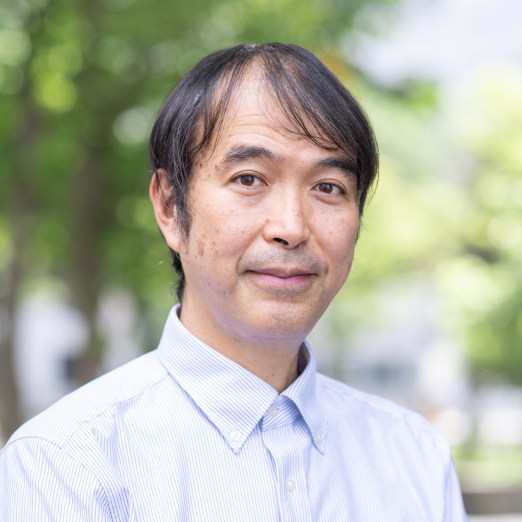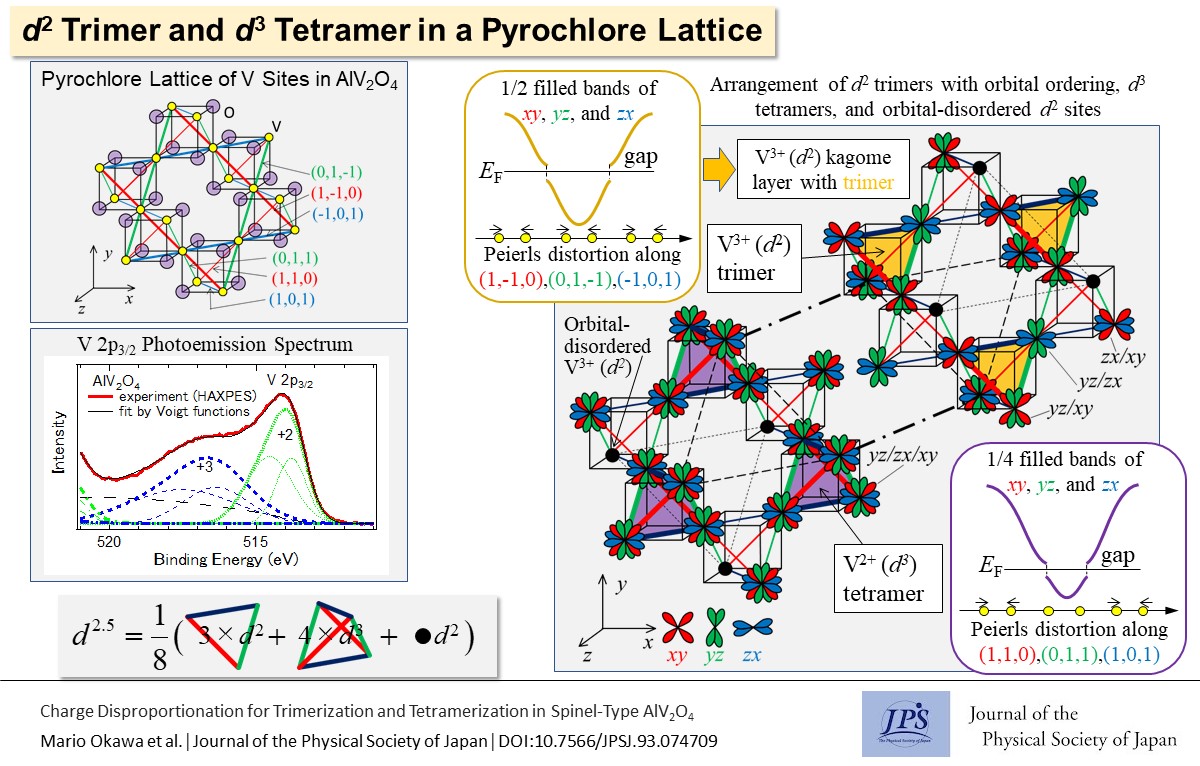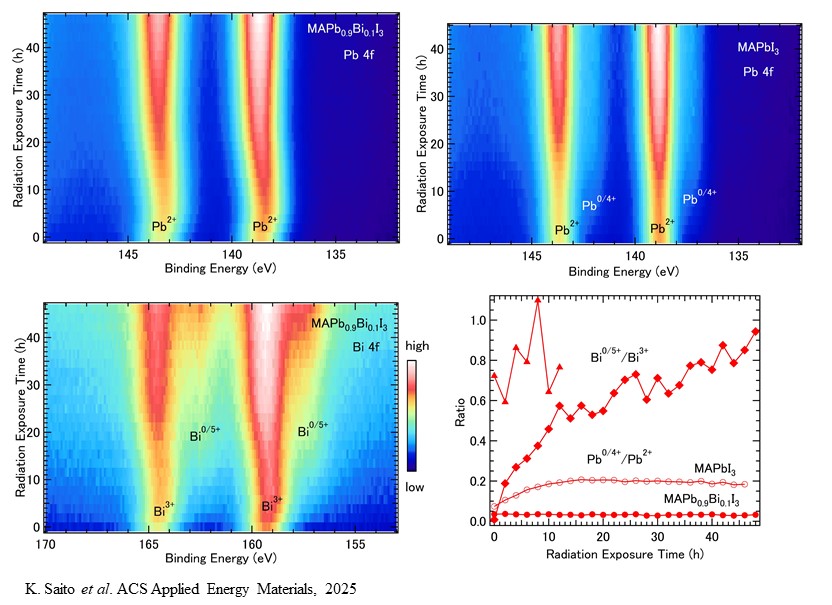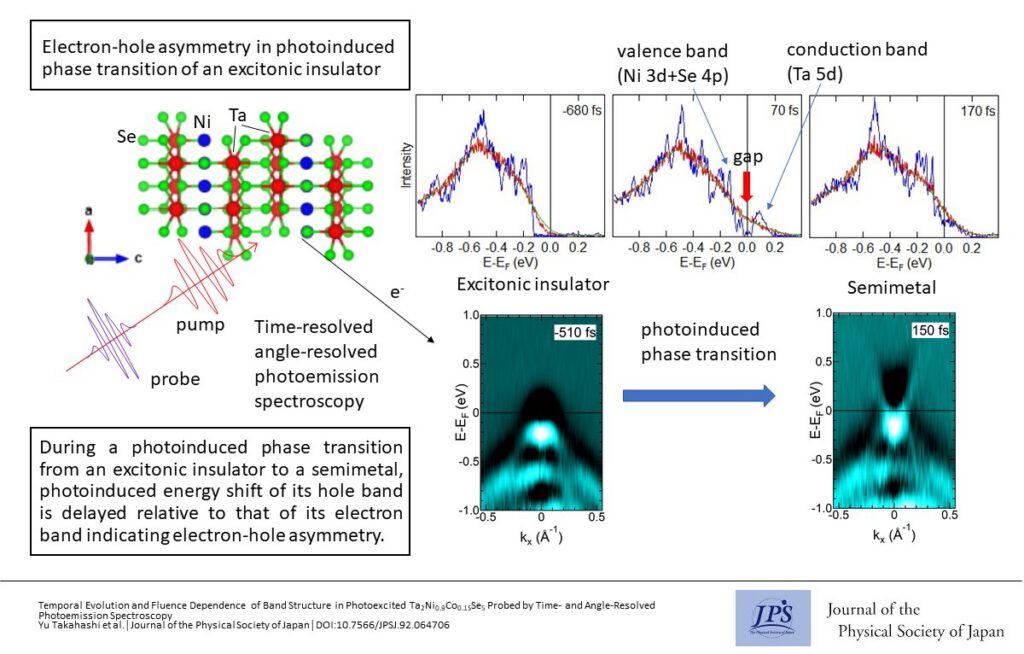
溝川 貴司 教授
Takashi Mizokawa
専門分野
固体物理学・放射光分光
固体中の電子状態の多様性
研究テーマ
強相関電子系 / 光電子分光 / X線分光・散乱
キーワード
遷移金属化合物, 電子構造, 超伝導, 磁性, 金属絶縁体転移, 光誘起相転移
LINKS
RESEARCH OVERVIEW
研究概要
真空中で固体に真空紫外線やX線を照射すると表面から光電子が放出されます。この光電子の運動エネルギーと運動量を計測することにより、固体表面や固体中で電子が占有している状態を調べることができます(光電子分光)。逆に、電子線を固体表面に照射して放出される光子のエネルギーを測定することにより、電子に占有されていない状態の情報が得られます(逆光電子分光)。当研究室では、これらの電子分光に加えて、高輝度で波長可変な放射光を利用するX線分光・散乱を実験手段として、固体表面や固体中において相関した電子の織り成す多彩な現象を研究しています。
主な研究対象は、磁性や超伝導、金属絶縁体転移などの面白い物性を示す遷移金属化合物(d電子系)と希土類化合物(f電子系)です。dあるいはf電子系の電荷・スピン・軌道という自由度が格子振動と複雑に結合して、その多様な磁気的・電気的性質の発現を担っています。電子分光やX線分光による電子状態の計測結果に基づいて、物性のメカニズムを考察することができます。角度分解光電子分光でバンド構造を観測し、電子間相互作用と電子格子相互作用を取り入れたモデル計算と比較することによって、電子相関や格子振動の効果を評価することができます。
d電子系やf電子系は基礎物性の研究対象としての面白みだけでなく、光合成の活性中心のマンガンクラスターやリチウムイオン電池の正極のコバルト酸化物など、触媒やエネルギー変換材料としても重要です。電子分光・X線分光を駆使して表面・界面の複雑な電子状態の役割を解明することによって、従来材料の性能改善や新しい材料の開発に貢献することを目指しています。
MESSAGE to STUDENTS
学生へのメッセージ
角度分解光電子分光によって固体中や固体表面の電子のバンド構造を計測することができます。電子のバンド分散やフェルミ面の計測は様々な半導体素子や超伝導素子の開発において重要な役割を果たします。内殻X線分光では複雑な試料で特定の元素の原子価や電子状態を計測することができます。電池電極材料や光触媒、さらには金属タンパクの生命機能の解明に貢献することができます。放射光を駆使するこれらの計測手法を身に着けて、世界中の研究者と協力しながら次世代の材料開発に挑みましょう。
学歴・経歴
1990年 東京大学 理学部 物理学科卒業
1992年 東京大学大学院 理学系研究科 修士課程修了
1993年 東京大学大学院 理学系研究科助手
1996年 博士(理学)東京大学
1998年 フローニンゲン大学 博士研究員
1999年 東京大学大学院 新領域創成科学研究科 助教授
2015年 早稲田大学 理工学術院 先進理工学部 応用物理学科 教授
所属学協会
- 日本物理学会
- 放射光学会

Takashi Mizokawa
Professor
Field of study
Solid state physics / Synchrotron radiation spectroscopy
Diversity of electronic states in solids
Research Themes
Strongly correlated electron systems / Photoemission spectroscopy / X-ray spectroscopy and scattering
Keywords
Transition-metal compounds, Electronic structure, Superconductivity, Magnetism, Metal-insulator transition, Photo-induced phase transition
RESEARCH OVERVIEW
When a solid surface is irradiated by ultraviolet or x-ray light under vacuum, photoelectrons are emitted from the surface. By measuring the energy and momentum of the photoelectrons, we can study occupied states of the solid (photoemission spectroscopy). On the other hand, we can study unoccupied states of the solid by detecting ultraviolet or x-ray light emitted from the surface under electron beam irradiation (inverse-photoemission spectroscopy). Our research interests primarily focus on electron correlation effect in various electronic states of solids that can be observed by means of the photoemission and inverse-photoemission spectroscopy as well as x-ray spectroscopy/scattering with synchrotron radiation.
In particular, we are interested in transition-metal compounds (d-electron systems) and rare-earth compounds (f-electron systems) that show rich physical properties such as magnetism, superconductivity, and metal-insulator transition. The rich phenomena are derived from the spin, charge, and orbital degrees of freedom of the d– or f-electrons that are coupled with lattice in a complicated manner. We can study their mechanisms on the basis of the electronic structural information from the electron and x-ray spectroscopy experiments. The band dispersion can be probed by angle-resolved photoemission spectroscopy and can be analyzed by model calculations including electron-electron and electron-lattice interactions.
In addition to the interests in the fundamental electronic structures, useful catalysts and energy materials can be developed using d– and f-electron systems such as Mn clusters for photosynthesis and LixCoO2 cathode for Li-ion battery. By proving the complicated surface or interface electronic states with electron and x-ray spectroscopy, we aim to contribute to improvement and development of future energy materials.
MESSAGE to STUDENTS
We can measure the band structure of both the bulk and surface of solids using angle-resolved photoemission spectroscopy. Measurements of the band dispersion and Fermi surface of electrons play important roles in the development of various semiconductor and superconductor devices. Core-level X-ray spectroscopy enables us to probe the valence states and electronic configurations of specific elements in complex materials. Through synchrotron-based spectroscopy, we contribute to the development of battery electrodes and photocatalysts, as well as to the understanding of the functionalities of various metalloproteins. Let us take on the challenge of developing next-generation materials together with researchers around the world.
Education and Career
1990 Graduated from School of Science, University of Tokyo
1992 Graduated from master course of Graduate School of Science, University of Tokyo
1993 Research Associate, Graduate School of Science, University of Tokyo
1996 Ph.D. in Physics, University of Tokyo
1998 Researcher, Material Science Centre, University of Groningen
1999 Associate Professor, Graduate School of Frontier Sciences, University of Tokyo
2015 Professor, School of Advanced Science and Engineering, Waseda University
Professional Memberships
- Physical Society of Japan
- Japanese Society for Synchrotron Radiation Research



